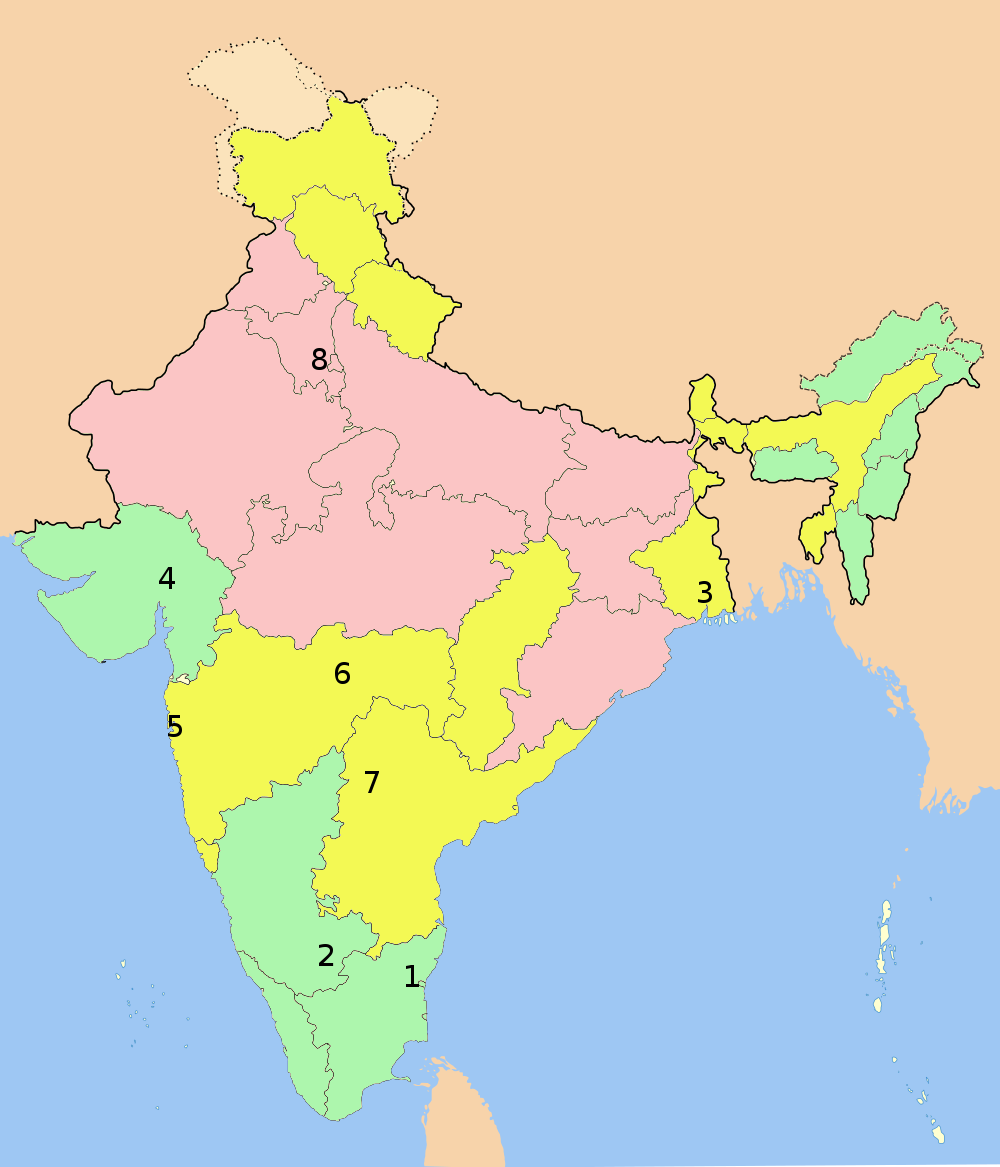|
Blank Noise Project
Blank Noise is a community/ public art project that seeks to confront street harassment, commonly known as eve teasing, in India. The project, initiated by Jasmeen Patheja in August 2003, started out as a student project at Srishti School of Art Design and Technology in Bangalore and has since spread out to other cities in India. Activities Blank Noise is led and run completely by volunteers. A core team of male and female volunteers from across geographical locations and age groups work with the collective. Blank Noise seeks to trigger public dialogue on the issue of street sexual harassment. Conversations range from collectively building a definition of "eve-teasing" to defining the boundaries of "teasing", "harassment", "flirting". The collective builds testimonials of street sexual violence, harassment and "eve-teasing" and disperses them back in public, thereby creating public debate. It addresses women's fear based relationship with their cities via direct street a ... [...More Info...] [...Related Items...] OR: [Wikipedia] [Google] [Baidu] |
Public Art
Public art is art in any Media (arts), media whose form, function and meaning are created for the general public through a public process. It is a specific art genre with its own professional and critical discourse. Public art is visually and physically accessible to the public; it is installed in public space in both outdoor and indoor settings. Public art seeks to embody public or universal concepts rather than commercial, partisan or personal concepts or interests. Notably, public art is also the direct or indirect product of a public process of creation, procurement, and/or maintenance. Independent art created or staged in or near the public realm (for example, graffiti, street art) lacks official or tangible public sanction has not been recognized as part of the public art genre, however this attitude is changing due to the efforts of several street artists. Such unofficial artwork may exist on private or public property immediately adjacent to the public realm, or in natu ... [...More Info...] [...Related Items...] OR: [Wikipedia] [Google] [Baidu] |
Indian Express
''The Indian Express'' is an English-language Indian daily newspaper founded in 1932. It is published in Mumbai by the Indian Express Group. In 1999, eight years after the group's founder Ramnath Goenka's death in 1991, the group was split between the family members. The southern editions took the name ''The New Indian Express'', while the northern editions, based in Mumbai, retained the original ''Indian Express'' name with ''"The"'' prefixed to the title. History In 1932, the ''Indian Express'' was started by an Ayurvedic doctor, P. Varadarajulu Naidu, at Chennai, being published by his "Tamil Nadu" press. Soon under financial difficulties, he sold the newspaper to Swaminathan Sadanand, the founder of ''The Free Press Journal'', a national news agency. In 1933, the ''Indian Express'' opened its second office in Madurai, launching the Tamil edition, '' Dinamani''. Sadanand introduced several innovations and reduced the price of the newspaper. Faced with financial difficultie ... [...More Info...] [...Related Items...] OR: [Wikipedia] [Google] [Baidu] |
Sexism
Sexism is prejudice or discrimination based on one's sex or gender. Sexism can affect anyone, but it primarily affects women and girls.There is a clear and broad consensus among academic scholars in multiple fields that sexism refers primarily to discrimination against women, and primarily affects women. See, for example: * Defines sexism as "prejudice, stereotyping, or discrimination, typically against women, on the basis of sex". * Defines sexism as "prejudice or discrimination based on sex or gender, especially against women and girls". Notes that "sexism in a society is most commonly applied against women and girls. It functions to maintain patriarchy, or male domination, through ideological and material practices of individuals, collectives, and institutions that oppress women and girls on the basis of sex or gender." * Notes that Sexism' refers to a historically and globally pervasive form of oppression against women." * Notes that "sexism usually refers to prejudice ... [...More Info...] [...Related Items...] OR: [Wikipedia] [Google] [Baidu] |
Culture Of Bangalore
Bangalore is the capital and largest city of the Indian state of Karnataka. With a population of over 15 million (as of January 2016), Bangalore is the third largest city in India and 27th largest city in the world. Bangalore is one of the most ethnically diverse cities in the country, with over 51% of the city's population being migrants from other parts of India. Historically a multicultural city, Bangalore has experienced a dramatic social and cultural change with the advent of the liberalization and expansion of the information technology and business process outsourcing industries in India. IT companies in Bangalore employ over 35% of India's pool of 1 million IT professionals. Garden City Bangalore was known as the Garden City of India and has two nationally recognized botanical gardens – Lal Bagh and Cubbon Park, which attract a lot of visitors through the year. The city was the recipient of the ''Indira Priyadarshini Vruksha Mitra'' award in the late 1980s, in recogni ... [...More Info...] [...Related Items...] OR: [Wikipedia] [Google] [Baidu] |
Feminism In India
Feminism in India is a set of movements aimed at defining, establishing, and defending equal political, economic, and social rights and opportunities for women in India. It is the pursuit of women's rights within the society of India. Like their feminist counterparts all over the world, feminists in India seek gender equality: the right to work for equal wages, the right to equal access to health and education, and equal political rights. Ray, Raka. Fields of Protest: Women's Movements in India''. University of Minnesota Press; Minneapolis, MN. 1999. Page 13. Indian feminists also have fought against culture-specific issues within India's patriarchal society, such as inheritance laws. The history of feminism in India can be divided into three phases: the first phase, beginning in the mid-19th century, initiated when reformists began to speak in favour of women rights by making reforms in education and customs involving women; the second phase, from 1915 to Indian independ ... [...More Info...] [...Related Items...] OR: [Wikipedia] [Google] [Baidu] |
Sexual Harassment In India
Sexual harassment is a type of harassment involving the use of explicit or implicit sexual overtones, including the unwelcome and inappropriate promises of rewards in exchange for sexual favors. Sexual harassment includes a range of actions from verbal transgressions to sexual abuse or assault.Dziech, Billie Wright; Weiner, Linda. ''The Lecherous Professor: Sexual Harassment on Campus''. Chicago Illinois: University of Illinois Press, 1990. ; Boland, 2002 Harassment can occur in many different social settings such as the workplace, the home, school, or religious institutions. Harassers or victims may be of any sex or gender. In modern legal contexts, sexual harassment is illegal. Laws surrounding sexual harassment generally do not prohibit simple teasing, offhand comments, or minor isolated incidents—that is due to the fact that they do not impose a "general civility code". In the workplace, harassment may be considered illegal when it is frequent or severe thereby creating ... [...More Info...] [...Related Items...] OR: [Wikipedia] [Google] [Baidu] |
Women In India
The status of women in India has been subject to many changes over the span of recorded Indian history. Their position in society deteriorated early in India's ancient period, especially in the Indo-Aryan speaking regions, and their subordination continued to be reified well into India's early modern period. During the British East India Company rule (1757–1857), and the British Raj (1858–1947), measures aiming at amelioration were enacted, including Bengal Sati Regulation, 1829, Hindu Widows' Remarriage Act, 1856, Female Infanticide Prevention Act, 1870, and Age of Consent Act, 1891. The Indian constitution prohibits discrimination based on sex and empowers the government to undertake special measures for them. Women's rights under the Constitution of India mainly include equality, dignity, and freedom from discrimination; additionally, India has various statutes governing the rights of women. Several women have served in various senior official positions in the Indian g ... [...More Info...] [...Related Items...] OR: [Wikipedia] [Google] [Baidu] |
Victim Blaming
Victim blaming occurs when the victim of a crime or any wrongful act is held entirely or partially at fault for the harm that befell them. There is historical and current prejudice against the victims of domestic violence and sex crimes, such as the greater tendency to blame victims of rape than victims of robbery if victims and perpetrators knew each other prior to the commission of the crime. Coining of the phrase Psychologist William Ryan coined the phrase "blaming the victim" in his 1971 book of that title. In the book, Ryan described victim blaming as an ideology used to justify racism and social injustice against black people in the United States. Ryan wrote the book to refute Daniel Patrick Moynihan's 1965 work ''The Negro Family: The Case for National Action'' (usually simply referred to as the Moynihan Report). Moynihan had concluded that three centuries of oppression of black people, and in particular with what he calls the uniquely cruel structure of American slave ... [...More Info...] [...Related Items...] OR: [Wikipedia] [Google] [Baidu] |
Slut-shaming
Slut-shaming is the practice of criticizing people, especially women and girls, who are perceived to violate expectations of behavior and appearance regarding issues related to sexuality. The term is used to reclaim the word ''slut'' and empower women and girls to have agency over their own sexuality. It may also be used in reference to gay men, who may face disapproval for promiscuous sexual behaviors. Slut-shaming rarely happens to heterosexual men. Examples of slut-shaming include being criticized or punished for: violating dress code policies by dressing in sexually provocative ways; requesting access to birth control; having premarital, extramarital, casual, or promiscuous sex; or engaging in prostitution. It can also include being victim-blamed for being raped or otherwise sexually assaulted. Definitions and characteristics Slut-shaming involves criticizing women for their transgression of accepted codes of sexual conduct, i.e., admonishing them for behavior, attire ... [...More Info...] [...Related Items...] OR: [Wikipedia] [Google] [Baidu] |
Sexism In India
Gender inequality in India refers to the health, education, economic and political inequalities between men and women in India.The Global Gender Gap Report 2013 World Economic Forum, Switzerland Various international gender inequality indices rank India differently on each of these factors, as well as on a composite basis, and these indices are controversial. , and their social causes, impact India's , |
Rape In India
Rape is the fourth most common crime against women in India. According to the 2021 annual report of the National Crime Records Bureau (NCRB), 31,677 rape cases were registered across the country, or an average of 86 cases daily, a rise from 2020 with 28,046 cases, while in 2019, 32,033 cases were registered. Of the total 31,677 rape cases, 28,147(nearly 89%) of the rapes were committed by persons known to the victim. The share of victims who were minors or below 18 - the legal age of consent - stood at 10%. India has been characterised as one of the "countries with the lowest per capita rates of rape". The government also classifies consensual sex committed on the false promise of marriage as rape. The willingness to report rapes have increased in recent years, after several incidents received widespread media attention and triggered local and nationwide public protests. This led the government to reform its penal code for crimes of rape and sexual assault. According to NCRB ... [...More Info...] [...Related Items...] OR: [Wikipedia] [Google] [Baidu] |
Priya's Shakti
''Priya's Shakti'' is a graphic novel by Ram Devineni and Dan Goldman, whose heroine, Priya, is a "modern-day female superhero", a rape survivor who rides a flying tiger. Issued in 2014, it was followed by ''Priya's Mirror'' (2016) and ''Priya and the Lost Girls'' (2019). Background and production Indian American film maker Ram Devineni was inspired to create ''Priya's Shakti'' in response to the Delhi bus rape in 2012. He travelled around India and parts of southeast Asia for almost a year, consulting with activists against gender-based violence and also with sociologists, philosophers and poets, before collaborating with American comic book designer Dan Goldman, whom he met in New York, to create a graphic novel. Produced in Hindi and English, the comic was available as a free download and was launched at Mumbai Comicon in December 2014, two years after that case. The project's social impact director was Lina Srivastava; in partnership with Aapne Aap Worldwide, an NGO helpin ... [...More Info...] [...Related Items...] OR: [Wikipedia] [Google] [Baidu] |







_Rape_rates_per_100000_population_2010-2012%2C_world.jpg)